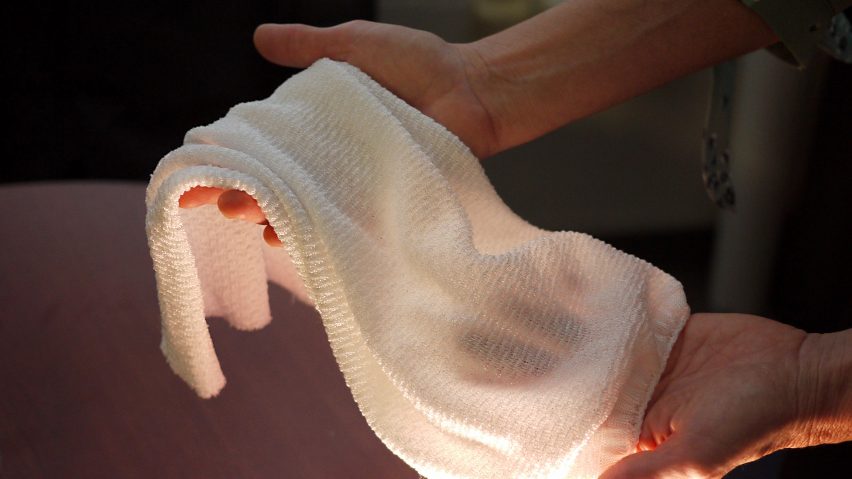Researchers at University of Maryland have invented a smart material capable of warming up a person when they're cold and cooling them down when they're hot.
The textile is made of regular polymer fibres that have been coated with carbon nanotubes, making them responsive to changes in body heat.
In warm and humid conditions, when the body is sweating on a hot day, the yarn contracts, allowing more infrared radiation coming off the body to pass through. When it's cool and dry, the yarn expands, trapping that same heat.
The effect would be almost instantaneous, with the fabric activating well before a person noticed any physical discomfort.
The University of Maryland (UMD) scientists discussed the research in the journal Science this month, in a paper titled Dynamic gating of infrared radiation in a textile.
"The human body is a perfect radiator. It gives off heat quickly," said researcher Min Ouyang, a UMD physics professor and co-author on the paper. "For all of history, the only way to regulate the radiator has been to take clothes off or put clothes on. But this fabric is a true bidirectional regulator."
The most obvious application for the material would be sportswear, but the researchers see a wider scope for its use in clothing and bed linen.
"I think it's very exciting to be able to apply this gating phenomenon to the development of a textile that has the ability to improve the functionality of clothing and other fabrics," continued Ouyang.
The fabric constitutes a new type of active or smart material — a class of materials that change their colour, stiffness or another property in response to some prompt. In this case, the yarn changes shape.
Researchers at MIT' achieved a similar affect a few years ago with a material they dubbed BioLogic, which harnessed the power of certain bacteria. Another was the Active Auxetic material.
In contrast, the UMD's material uses a readily available base fibre, with a carbon coating they say can be easily added during the dying process. It also harnesses electromagnetic changes in the carbon-based coating to enhance the effect.
The warping yarn actually helps to modulate temperature in two ways. The first is that with enlarged pores in the fabric, more heat can escape, cooling down the body.
But the bigger impact comes from a knock-on effect of this distortion. With the pores more open and strands of yarn closer together, the electromagnetic coupling between the carbon nanotubes changes, further augmenting how much infrared radiation can pass through.
"You can think of this coupling effect like the bending of a radio antenna to change the wavelength or frequency it resonates with," said another of the paper's co-authors, chemistry and biochemistry professor YuHuang Wang.
"It's a very simplified way to think of it, but imagine bringing two antennae close together to regulate the kind of electromagnetic wave they pick up. When the fibres are brought closer together, the radiation they interact with changes. In clothing, that means the fabric interacts with the heat radiating from the human body."
An example of a smart material already in use in sportswear is in Reebok's PureMove sports bra. It incorporates a texture-changing gel that adapts its firmness in response to different levels of movement.
Photography is by Faye Levine / University of Maryland.

